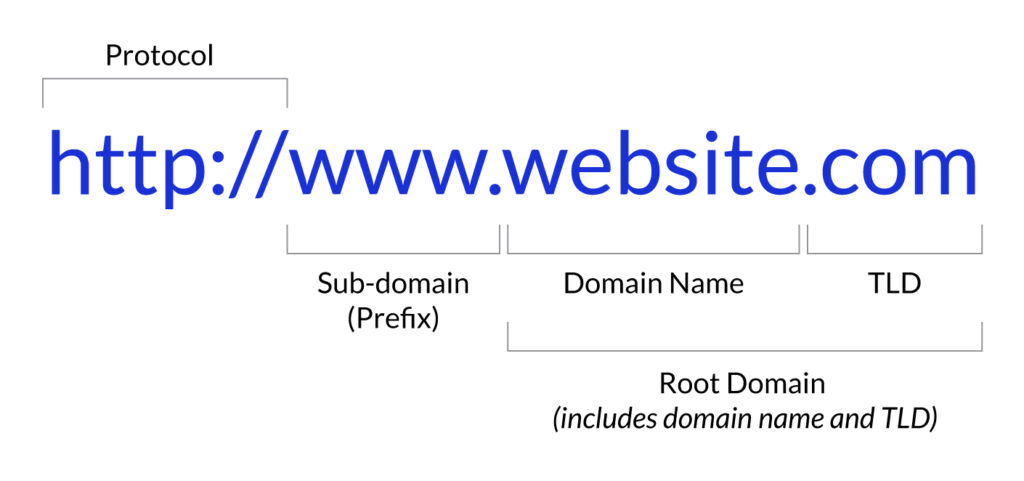TLD
The letters displayed after the last dot of a domain name — such as .ca, .us, .org, .net and .com — are the TLD (top-level domain). It is therefore the most general component of the domain name.

All domains are sub-domains of each other, except for the root (which is the beginning of the domains, so to speak). For example, abc.xyz.ca is a sub-domain of .xyz.ca, .xyz.ca is a sub-domain of .ca, and .ca is a sub-domain of the root.
There are three types of TLDs:
- Country code TLDs (ccTLDs).
- Generic TLDs.
- Special-Use TLDs.
Country code TLDs are associated with specific countries in that their subdomains share a common geographical characteristic.
Generic TLDs belong to ICANN. They are intended to host subdomains with a common non-geographic characteristic. Generic TLDs (or domains) can be “open” or “closed“. The open TLDs .net, .org, and .info are well known.
Special-Use TLDs have special features. One example is .arpa, which is used to solve infrastructure problems.

Open and Closed Generic TLDs
Open TLDs have no restrictions. These TLDs have no specific fields, with a few exceptions.
For example :
- .app and .dev managed by Google must absolutely have the SSL (Secure Socket Layer) security protocol for them to be valid.
- .areo: you must be registered with an aeronautical order to register a domain name with this TLD.
- .travel: you need an agency number to register a domain name with this TLD.
Users who want to obtain subdomains in the category of closed (also called restricted) generic TLDs must comply with certain specific rules (or policies).